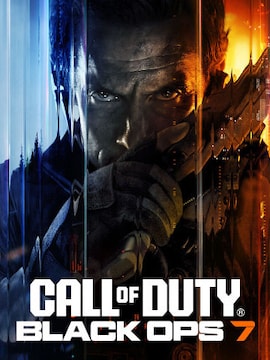Battlefield 4 still gets mentioned any time someone brings up the best shooters of the last decade.
Released back in 2013, it defined what large-scale modern warfare looked like in a multiplayer game. Now with Battlefield 6 on the horizon, EA and DICE are clearly hoping to bottle that same magic. But can it actually hold up next to a fan favorite that’s aged better than most?
Battlefield 6 vs Battlefield 4: What Has Changed?
Battlefield 4 let 64 players fight it out across huge maps full of tanks, jets, and collapsing buildings. Battlefield 6 tried pushing that number to 128 during testing, but the devs walked it back after seeing how that played out in Battlefield 2042. The current version sticks with the 64-player cap. And honestly, it feels like the right move. Conquest on the Liberation Peak map had a good flow, big enough to allow flanking and vehicle play, but tight enough to avoid aimless running.
Destruction in Battlefield 6 has been overhauled but not exaggerated. You can’t level entire maps anymore, and that’s by design. The devs call it “tactical destruction.” It feels closer to Bad Company 2 than BF4’s Levolution events. You can blow open walls, take out floors, or blast through cover, but there’s structure to it. They wanted destruction to open up new routes or change fights, not wipe the slate clean every match.
Weapon customization returns, but it’s less open-ended. Battlefield 4 let you go wild with attachments. Battlefield 6 limits things with “attachment points” – a soft cap on how much you can stack. It forces you to make choices, not just throw every bonus on a gun.
Classes, Movement, and Team Roles
Battlefield 4’s four-class system is back in Battlefield 6: Assault, Engineer, Support, and Recon. No Specialists this time. The return feels like a direct response to player feedback from Battlefield 2042. Each class now has its own perks and strengths, but weapons are not restricted. That said, you’ll get bonuses for using class-appropriate gear. For example, Medics handle LMGs without the usual movement penalty.
Reviving got an upgrade too. You can either use defibs for a quick pickup or drag teammates to cover and revive more safely. It’s slow, but it keeps you from dying mid-revive every time.
Movement has been tuned down. Battlefield 6 drops tactical sprint and slows things to match the scale of its maps. There’s a new movement system called Kinesthetic Combat. It lets you crouch sprint, lean around corners, climb instantly, and pull allies out of danger. It feels smooth and makes tight fights less clumsy.
Campaign Return and Post-Launch Plans
Battlefield 4 had a full campaign, and Battlefield 6 brings one back after skipping single-player in recent titles. This time, it’s 2027. You’re in the boots of Dagger 13, a Marine Raiders squad going up against Pax Armata, a private military group. It’s not revolutionary, but it does the job if you want more than just multiplayer.
Battlefield 4’s long life came from its post-launch support. DICE dropped five DLC packs with new maps and modes. Community servers kept it alive for years. Battlefield 6 is aiming for that kind of longevity too. EA promises solid launch support, crossplay from day one, and a new kernel-level anti-cheat system called Javelin.
The beta drew over half a million players. Interest is clearly there, but expectations are higher now. Back in 2013, Battlefield 4 launched broken and still bounced back. Battlefield 6 doesn’t get that same luxury. Players want it to work out of the gate.
Community Pressure and Dev Response
One of the bigger differences between now and then is how loud and fast player feedback comes in. Battlefield 4 had time to grow. It launched with server issues and game-breaking bugs, but most players were willing to wait. Battlefield 6 is launching in an era where a bad first week can bury a game. DICE knows this. Sources say they’ve put more time into stability and matchmaking than flashy features.
The beta had regional server tests, real-time feedback channels, and rollback systems to catch errors fast. The studio is trying to rebuild trust, not just recreate a hit. Whether or not they pull it off is another matter. But it’s clear they’ve been paying attention.
New Era, Old Lessons: The Future of the Franchise
There’s a different kind of pressure riding on Battlefield 6. Pleasing long-time fans matters, but the bigger challenge is proving the franchise can still hold its own in a market full of battle royales, fast-paced shooters, and free-to-play giants. DICE is leaning into what made Battlefield great without clinging to the past. It’s a balancing act. On one hand, you’ve got returning players who want familiar systems. On the other, new players are coming in from faster, more arcade-style shooters. Battlefield 6 has to appeal to both.
That’s not easy, because the industry is crowded. Live service models, seasonal content, and player retention strategies can choke the life out of a game if they’re handled wrong. Battlefield 2042 suffered from that. Battlefield 6 seems to be going simpler, with clear class roles, a focused campaign, and fewer flashy but hollow systems. Instead of promising the world, it’s offering something solid. That may be the smarter route.
The future of Battlefield likely depends on whether this entry lands well. If it does, it lays the foundation for consistent support and a steady player base. If it flops, it becomes another cautionary tale of big promises and rushed execution. Fans aren’t asking for a miracle. They just want something that works, feels good to play, and respects their time.
Battlefield 6 Comparison: Final Thoughts
Battlefield 6 is walking a tightrope. It wants to be fresh, but familiar. Bigger, but more focused. After Battlefield 2042, DICE had to prove they were still listening. Battlefield 6, so far, looks like a course correction.
It brings back the class system, makes destruction more meaningful, and ditches the clutter. If the launch goes well and the updates keep coming, it might actually live up to Battlefield 4’s legacy. And maybe even build one of its own.




